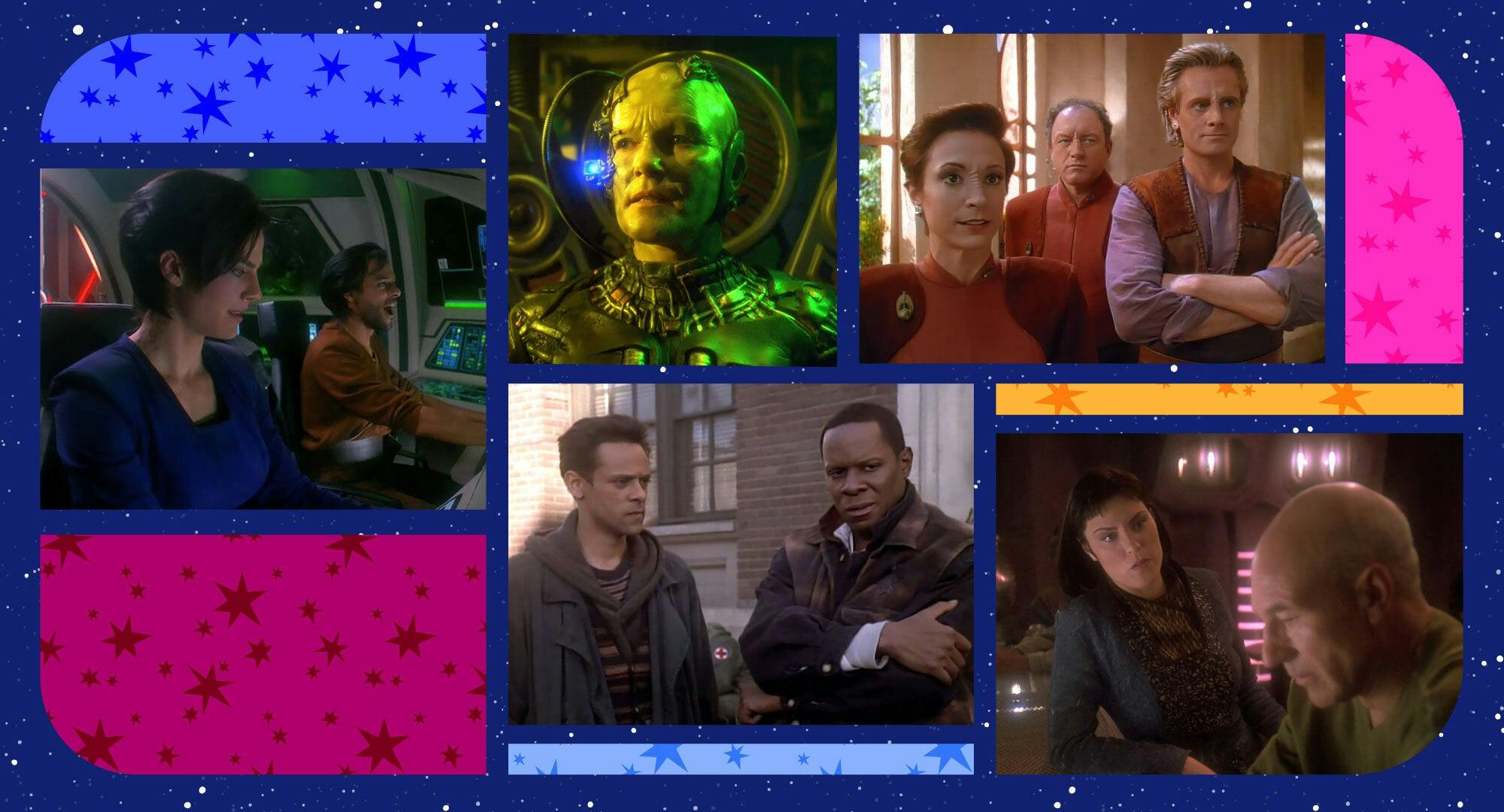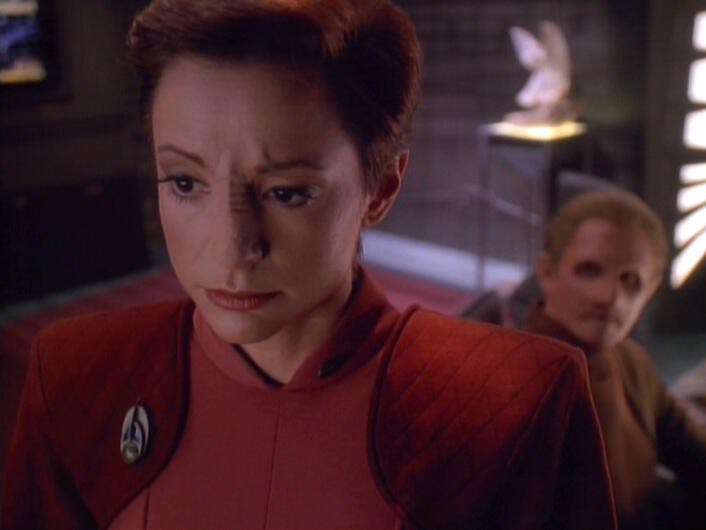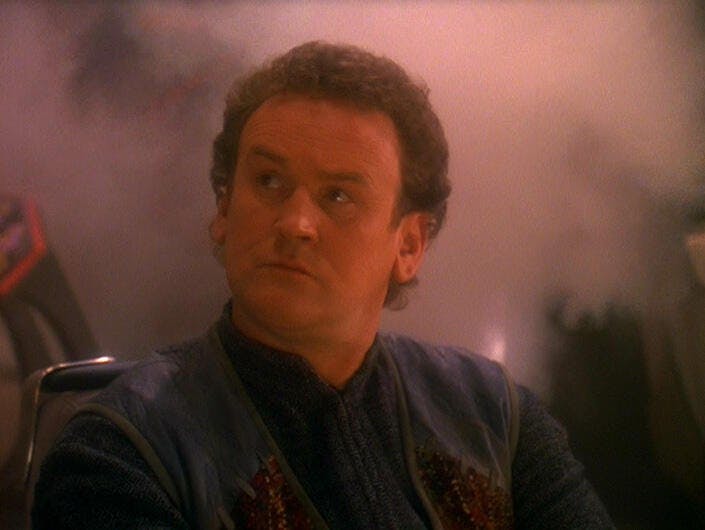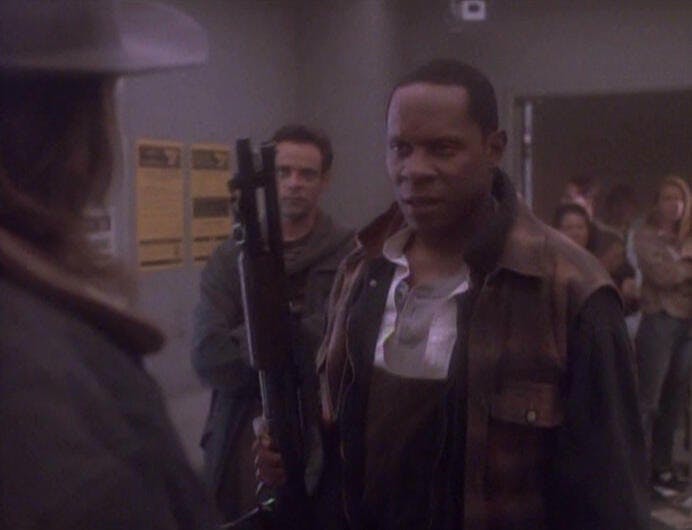
StarTrek.com
“I hold it that a little rebellion now and then is a good thing, and as necessary in the political world as storms in the physical,” wrote Thomas Jefferson in a 1787 letter to James Madison — adding, a few sentences later, that authorities shouldn’t discourage rebellions, as they’re “a medicine necessary for the sound health of government.”
Two hundred and thirty-three years later, in the midst of international Black Lives Matter protests, a statue of Jefferson — who owned more than 600 slaves — was toppled by protesters in Portland, Oregon. Times change. Values change. And as recent events have reminded us, rebellions remain a good and necessary thing.
Star Trek — a series ever willing to engage with thorny political issues — has spent plenty of time examining insurrections and revolutions. In recognition of Independence Day, which marks a key moment in America’s Revolutionary War, here are a few of our favorite resistance movements in Star Trek.
Star Trek Supports Black Lives Matter
The Bajoran Resistance and the Cardassian Liberation Front

StarTrek.com
Star Trek: Deep Space Nine — “Shakaar,” “When It Rains...”, and “The Dogs of War”
Depending on who you ask, the members of the Bajoran Resistance were either heroic freedom fighters or ruthless terrorists. Either way, they spilled a lot of blood as they waged a vicious, asymmetrical war against Bajor’s Cardassian occupiers.
Following the liberation of Bajor, former Resistance fighter Kira Nerys wrestled with her past — and saw how the effects of a rebellion echo long after its final shots are fired. Things come full circle when Sisko tasks Kira with teaching guerilla tactics to the Cardassian Liberation Front, a group of Federation-allied Cardassians. It’s an uneasy alliance, and one that shows Kira — and everybody else — that uprisings never exist in a bubble. Righteous or not, they incite, inspire, and inform future revolutions.
Unimatrix Zero

StarTrek.com
Star Trek: Voyager — “Unimatrix Zero, Part I” and “Unimatrix Zero, Part II”
When Seven of Nine discovers a tiny percentage of Borg regain their individuality while they regenerate, she quickly moves to protect them. But Janeway, because she’s Janeway, has a bolder plan — convince the liberated Borg to undermine the Collective.
“That sounds like you’re suggesting a civil war,” a concerned Seven says.“I’d prefer to call it 'a resistance movement,'” Janeway replies.
Granted, most resistance movements don’t start with their leader voluntarily getting assimilated so she can infiltrate a Borg Cube, but hey, unique problems require unique solutions. Plus, “Unimatrix Zero, Part I” features Janeway casually grabbing a Klingon’s bat’leth and using it to calmly, quickly eviscerate a Borg drone — like it’s just something she does every morning, no big deal — thus making it essential viewing.
The Maquis

StarTrek.com
Star Trek: The Next Generation — “Preemptive Strike”Star Trek: Deep Space Nine — “The Maquis, Part I” and “The Maquis, Part II”Star Trek: Voyager — “Caretaker”
Okay, I know this isn’t what the Federation wants to hear, but the Maquis? They have a pretty legit point. A militant group of disenfranchised Federation colonists, the Maquis saw their homes taken from them after a treaty between the Federation and the Cardassians created the controversial Demilitarized Zone. The Maquis’ battle to keep what was theirs brought real conflict — and real consequences — to the normally staid Federation.
“We’re all sympathetic, lieutenant,” Picard tells Ro. “Our civilian population in the Demilitarized Zone is in a very difficult situation. But even sympathy has to end at some point. A peace treaty isn’t just a piece of paper. If the Maquis force us into a war with Cardassia, it could mean hundreds of thousands of lives.”
Fair point — but in “The Maquis, Part II,” it gets shut down by Cal Hudson, a disillusioned Starfleet officer turned Maquis leader.
“The Federation believes that it can solve every problem with a treaty,” Hudson tells Sisko. “But out here, on the frontier, without the power of the Federation to back them up, a treaty is only a piece of paper.”
The Terran Rebellion

StarTrek.com
Star Trek: Deep Space Nine — “Through the Looking Glass” and “Shattered Mirror”
The Mirror Universe has rebellions, too — like when the Terran Resistance Forces take on the Klingon-Cardassian Alliance, using time-proven battle tactics such as “kidnapping Sisko” and “building their own Defiant, because the Defiant rules.”
Bonus! Everyone in the Mirror Universe calls their Miles O’Brien “Smiley,” which — like most things in the Mirror Universe — is sinister and ridiculous at the same time.
The Bell Riots

StarTrek.com
Star Trek: Deep Space Nine — “Past Tense, Part I” and “Past Tense, Part II”
At what point does a protest become a riot — and at what point does a riot become a revolution?
When a transporter malfunction dumps Sisko, Bashir, and Dax in 2024 San Francisco, Sisko and Bashir end up in one of the city’s “Sanctuary Districts” — sprawling, lawless camps where the poor are imprisoned, thanks to government neglect, institutionalized racism, and the apathy of the rich. What’s more, Sisko tells Bashir they’ve arrived just in time for the Bell Riots, when sanctuary residents will rise up, causing “one of the most violent civil disturbances in American history.” But, Sisko adds that once the flames die down, “the United States will finally begin correcting the social problems it had struggled with for over a hundred years.” Twenty-five years after it first aired, “Past Tense” remains discomfiting, powerful, and shockingly prescient.
This article was originally published on July 3, 2020.





